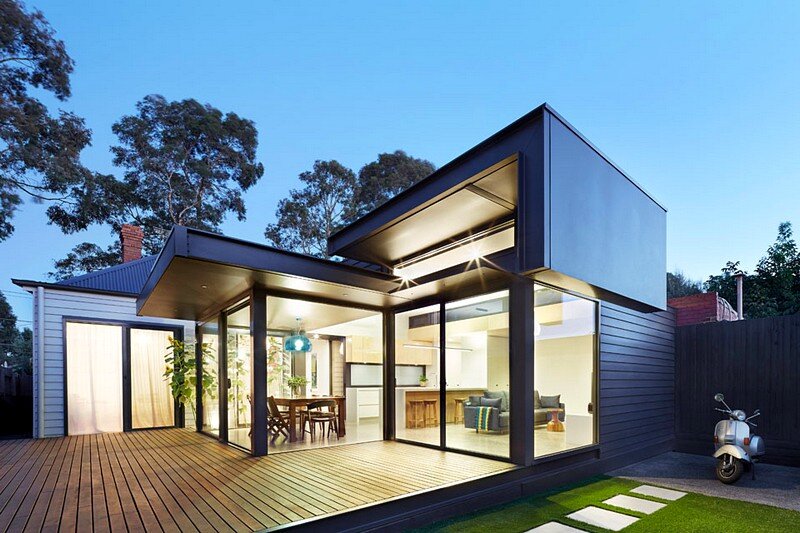
Are you considering expanding your home to create more space and increase its value? Home extensions are a popular option for homeowners looking to add extra living space without the hassle of moving. Whether you need an additional bedroom, a larger kitchen, or a home office, a well-planned extension can transform your property and enhance its appeal. In this ultimate guide, we will explore everything you need to know about home extensions, from the planning and design stages to the construction process and potential challenges.
Benefits of Home Extensions
Adding Space:
- Home extensions provide you with the opportunity to create additional living space to suit your family's needs.
- You can add extra bedrooms, bathrooms, a larger kitchen, or a home office without the need to move to a new property.
Increasing Property Value:
- Well-designed and professionally built home extensions can significantly increase the value of your property.
- Adding more square footage and improving the layout can make your home more attractive to potential buyers in the future.
Enhancing Lifestyle:
- Home extensions can improve your quality of life by providing you with the space you need to relax, work, or entertain.
- You can create a personalized and functional living environment that meets your specific requirements and preferences.
Types of Home Extensions
Single-Storey Extensions:
- Single-storey extensions are a popular choice for homeowners looking to add extra living space.
- They can be built at the rear or side of the property and are ideal for creating open-plan kitchen-dining areas or living rooms.
Double-Storey Extensions:
- Double-storey extensions involve extending the property on two levels, providing additional bedrooms or living space upstairs.
- They are a more significant investment but can significantly increase the value and functionality of your home.
Wrap-Around Extensions:
- Wrap-around extensions involve extending the property on two or more sides, creating a larger and more versatile living space.
- They are suitable for properties with large gardens or corner plots and can enhance the overall appearance of the property.
Planning and Design
Assessment of Space:
- Start by evaluating your current space and identifying the areas that require extension or improvement.
- Consider the orientation of your property, natural light, and existing architectural features when planning the extension.
Budgeting and Financing:
- Determine your budget for the extension project, including construction costs, design fees, and contingency funds.
- Explore financing options such as personal savings, home equity loans, or remortgaging to fund the extension.
Professional Design Services:
- Hire an experienced architect or designer to help you create detailed plans and drawings for the extension.
- Consider factors such as building regulations, planning permissions, and structural integrity when designing the extension.
Construction Process
Choosing a Contractor:
- Research and interview several contractors to find a reputable and experienced builder for your extension project.
- Check for references, licenses, and insurance coverage before making a final decision on the contractor.
Obtaining Permits:
- Check with your local planning department to determine if you need planning permission for the extension.
- Submit the necessary applications and obtain permits before starting the construction process.
Construction and Installation:
- Work closely with your contractor to ensure that the construction process runs smoothly and according to the approved plans.
- Monitor the progress of the extension and address any issues or changes that may arise during the construction phase.
Potential Challenges
Budget Overruns:
- Unforeseen issues such as structural problems or design changes can lead to budget overruns during the construction phase.
- It is essential to have a contingency fund and regular communication with your contractor to address any budgetary concerns.
Delays in Construction:
- Weather conditions, material shortages, or unforeseen complications can cause delays in the construction of your home extension.
- Be prepared for potential delays and work with your contractor to minimize any disruptions to the project timeline.
Quality of Workmanship:
- Ensure that your contractor maintains high-quality standards and adheres to the approved plans and specifications for the extension.
- Monitor the construction process closely and address any concerns about the quality of workmanship with your contractor.
By following this ultimate guide to home extensions, you can successfully add space and value to your property while creating a personalized and functional living environment that meets your needs. Whether you opt for a single-storey, double-storey, or wrap-around extension, careful planning, professional design services, and effective communication with your contractor are essential to the success of your project. With the right approach and attention to detail, a well-executed home extension can transform your property and enhance your quality of life for years to come.